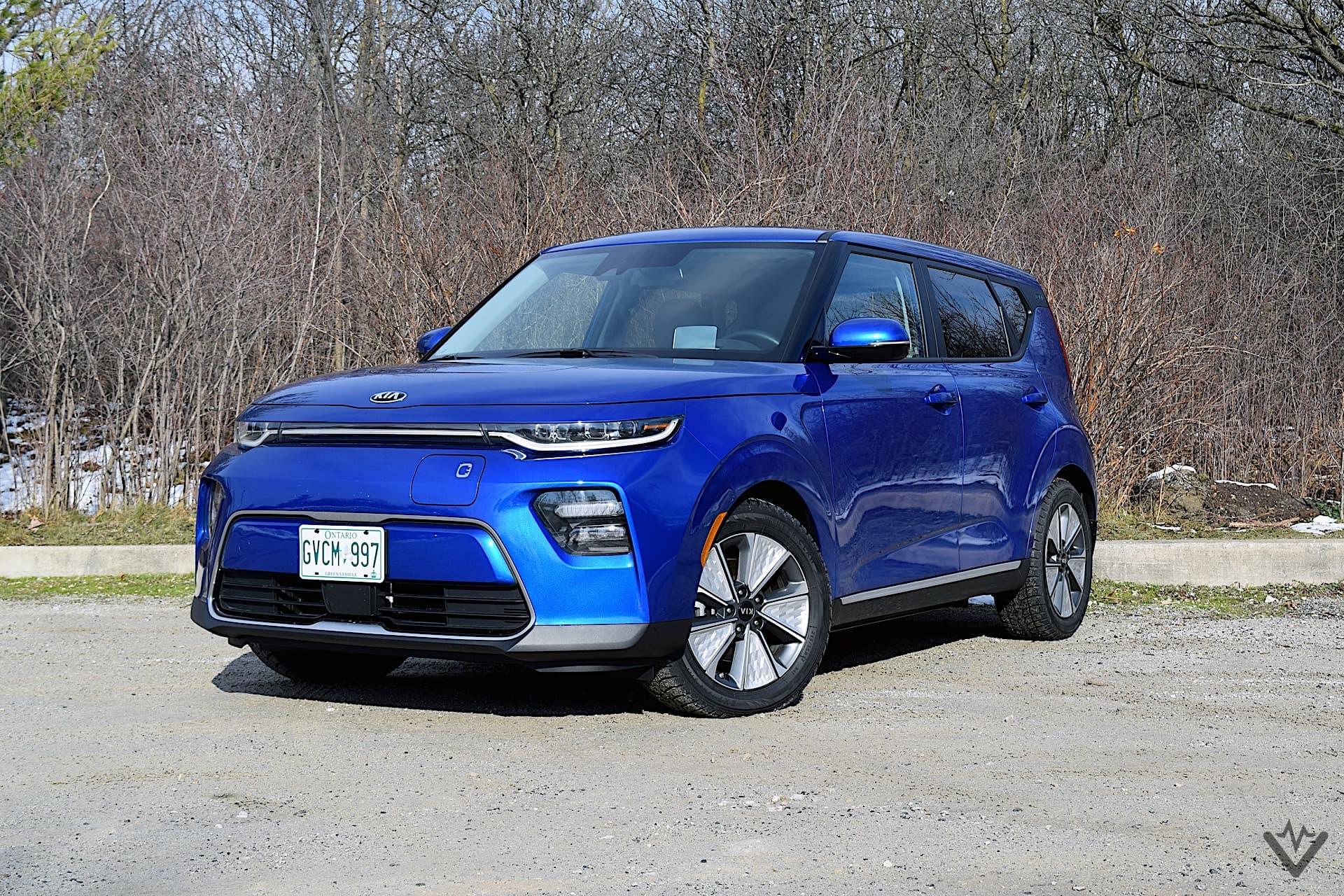Is it time for the Kia Soul EV to evolve beyond a compliance vehicle in the U.S.? Fortunately, a recent CARB filing suggests that the next-generation Soul EV may finally be arriving. However, buyers just across the border already get this stylish and practical compact electric car.
We snagged the keys to one of these Canadian spec Kia Soul EVs to see what we’ve been missing. Since the fundamentals of the Kia Soul EV are similar to the Niro EV and even the Hyundai Kona EV, we had tempered expectations, but the Soul managed to stand out among its peers.
2021 Kia Soul EV exterior
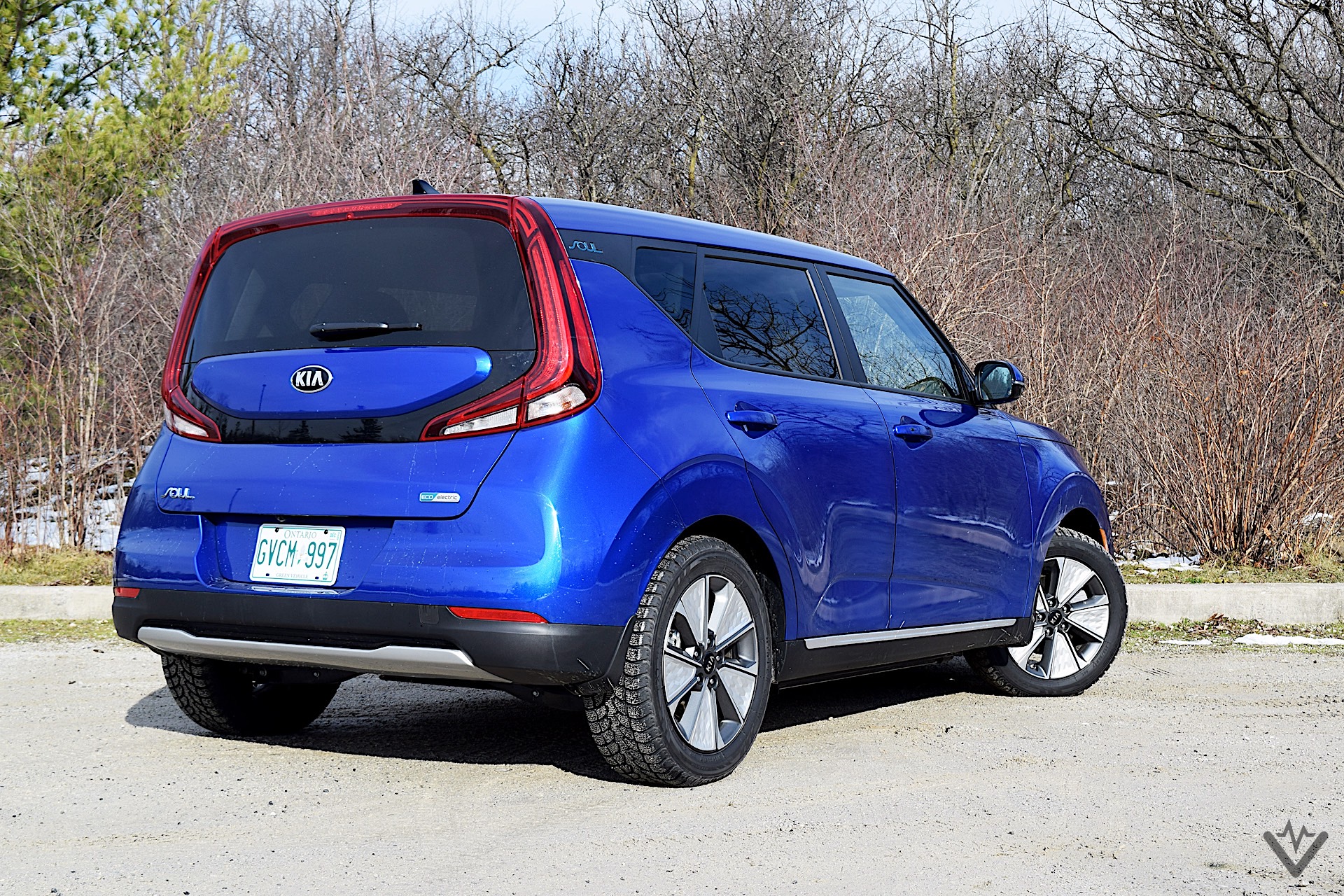
One of the most polarizing aspects of the Kia Soul is how it looks. Boxy profiles are rarely sexy and usually reserved for rugged and outdoor-oriented SUVs like the Wrangler. The Kia Soul navigates this styling direction well, looking far more modern than any other cube-like vehicle. It is a bit wider and taller than the outgoing Soul making it about the same size as the Kona and smaller than the Niro. Overall, it is fair to say the Soul looks a bit more quirky and eye-catching than the Niro while presenting a more practical body style than the Kona. Win-win in my books.
There is a slight change to the front end of the Soul compared to the internal combustion, with a slimmer top grille and a light bar that extends from one headlight to the other. Interestingly enough, Kia puts the charge port of the Soul EV on the nose of the vehicle, which makes it a bit less convenient to reverse park into a spot with a charger.
2021 Kia Soul EV interior
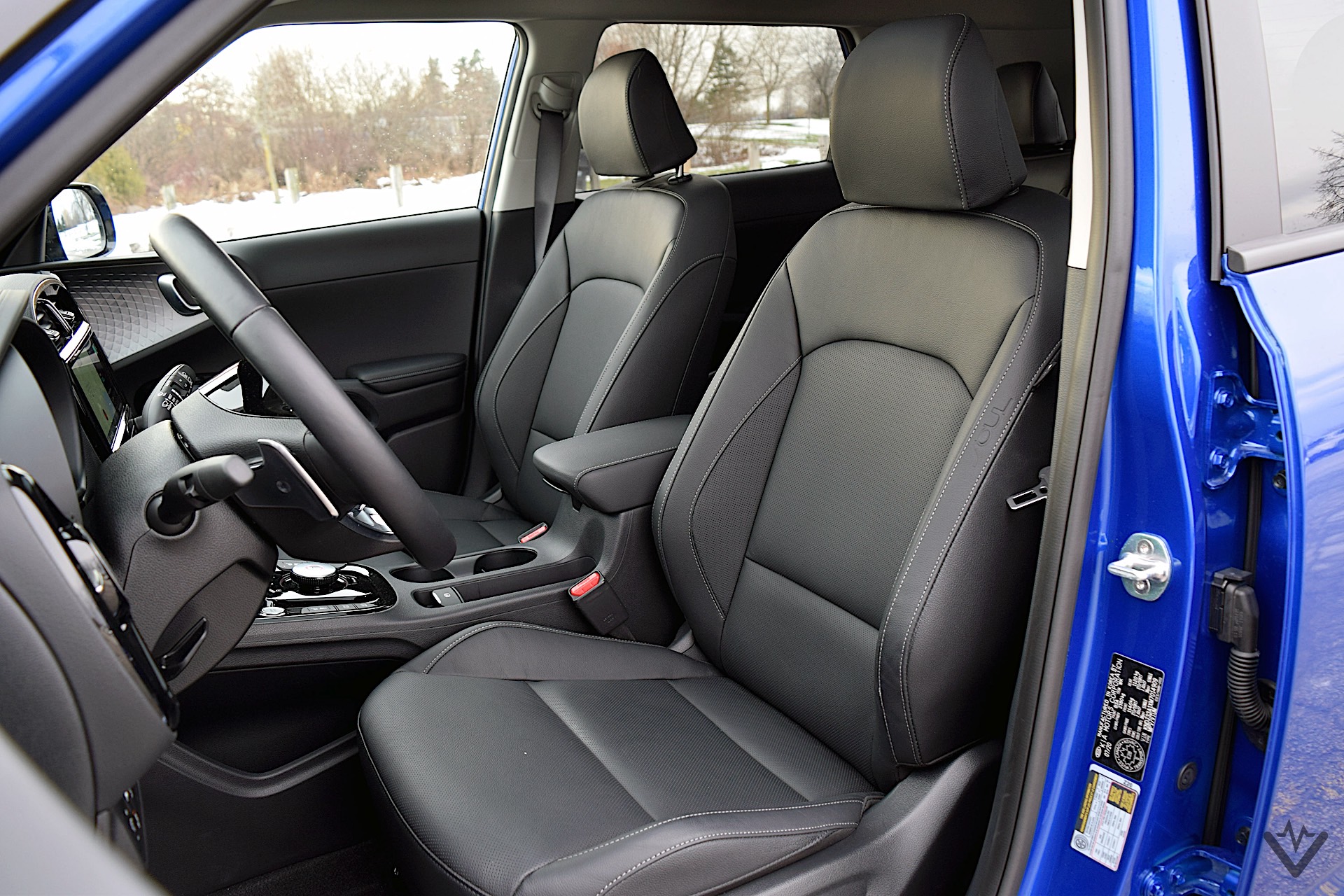
If you expected an interior as funky and creative as the exterior, then the Soul will disappoint a bit. There are few unique touches here, but I will highlight the available LED ambient lighting that is found on the door panels and near the speaker grilles. There are a few themes for these lights, or they can bop along with your music. It sounds like a gimmick but ends up looking far more attractive than the RGB lighting you find on a gaming PC.
Otherwise, you’re looking at a Kia interior like any other, and very reminiscent of the combustion-powered Soul. We’re talking black covered surfaces with a few glossy accents. There are the same high-tech screens, a transparent panel head-up display, even paddle shifters like the gas models, although these control the battery regeneration settings. One main difference from the gas-powered model is the gear selector, which is now a knob in the EV. Overall, the Soul EV is well packaged and designed as any other recent Kia compact, just featuring a toned-down impression from past models that felt truly unique.
2021 Kia Soul EV infotainment and tech

The Soul EV makes up for this with an impressive list of technology. For example, a 10.25-inch touch screen infotainment unit takes up residence on the dashboard. It’s bright, responsive, and supports Android Auto and Apple Car Play. There’s even a wireless phone charger for those not plugging their phones into the USB ports. I appreciate Kia keeping HVAC settings separate from the large infotainment screen, making those settings are adjustable with a set of physical buttons and knobs. That’s handy for making quick adjustments while on the road.
There’s a head-up display offered on the Soul EV, but it is less impressive than it sounds. By projecting information on a motorized plastic panel instead of the windshield, it feels less impactful. Fortunately, a large digital gauge cluster is present. While it helpfully provides a lot of information, I’d ask Kia to consider a new green driving coach, one that isn’t just mimicking a traditional gauge setup. Other automakers have shown off new ideas in this space, and it’s time for Kia to catch up.
On the other hand, the Soul EV arrives with plenty of driver assistance features and safety nets. The adaptive cruise control and lane-keeping assistance help to make highway drives simple and less tedious, while the Soul EV also features blind-spot monitoring, rear cross-traffic alert, and a driver attention detection system. These features worked well in clear weather, but once the snow and slush were on the road, the front sensors would complain, suggesting these features shouldn’t be relied upon in inclement conditions.
2021 Kia Soul EV recharging
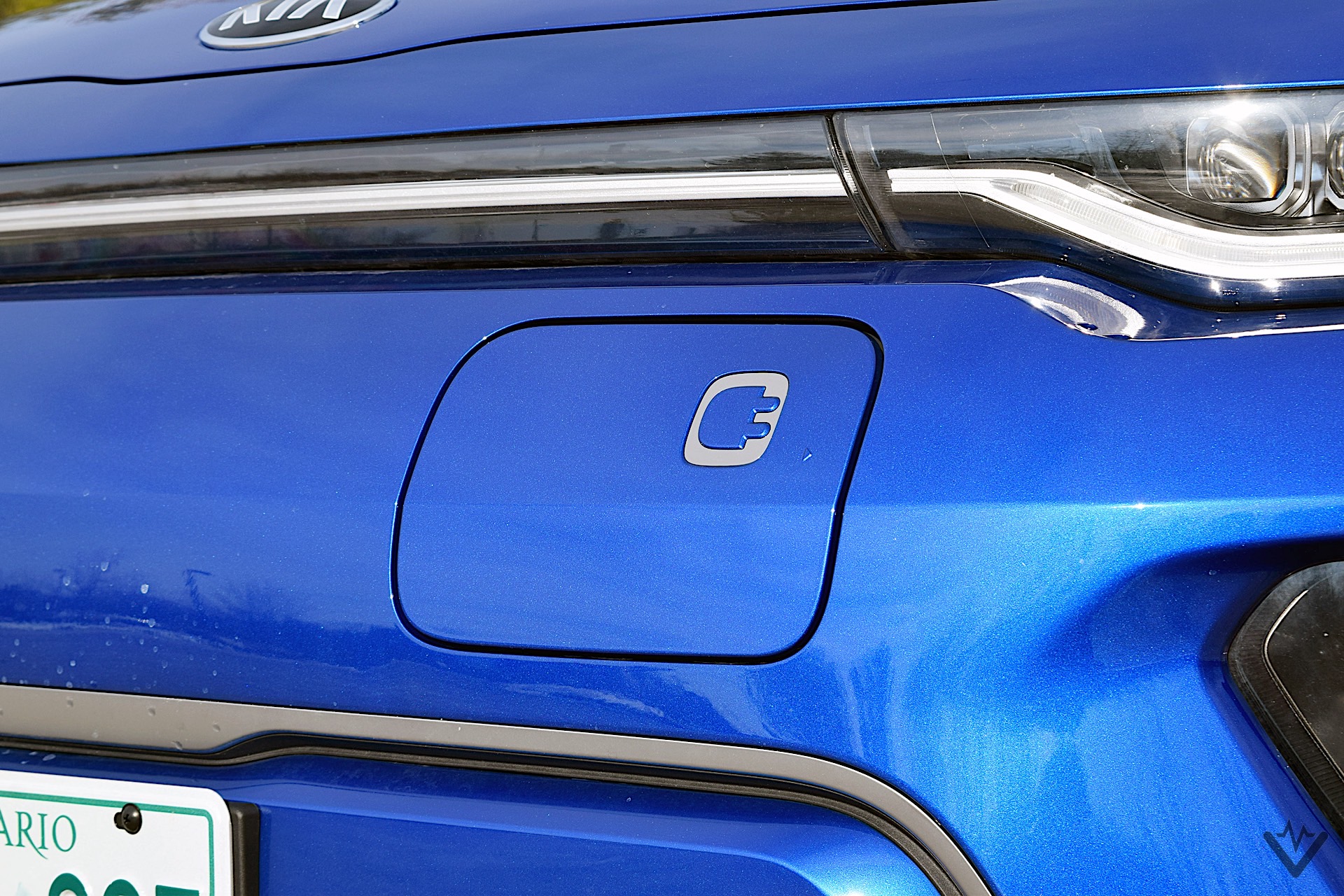
As mentioned, the Soul EV isn’t yet available in the U.S., but when it does, you can expect it to arrive with a 64 kWh battery, which is good for 243 miles.
In other markets, it’s available in two battery configurations: an air-cooled 39.2 kWh battery or a liquid-cooled 64 kWh battery. Much like the Nissan Leaf and its Plus models with additional range, this provides customers with more choices to find an EV that fits their budget.
The range of the bigger battery is more generous than what Nissan promises in the Leaf Plus models as well as the Kia Niro EV, but just short of what Chevy offers in the Bolt. It also lacks in comparison to the Kona EV.
It takes between 60 and 75 minutes to charge up that 64 kWh battery using a DC fast Charger. If you’re using a Level 2 charger, you’ll need nine and a half-hours for a complete charge. If you’re desperate, you can use a Level 1 charger that will take 59 hours to charge the battery.
2021 Kia Soul EV driving and performance
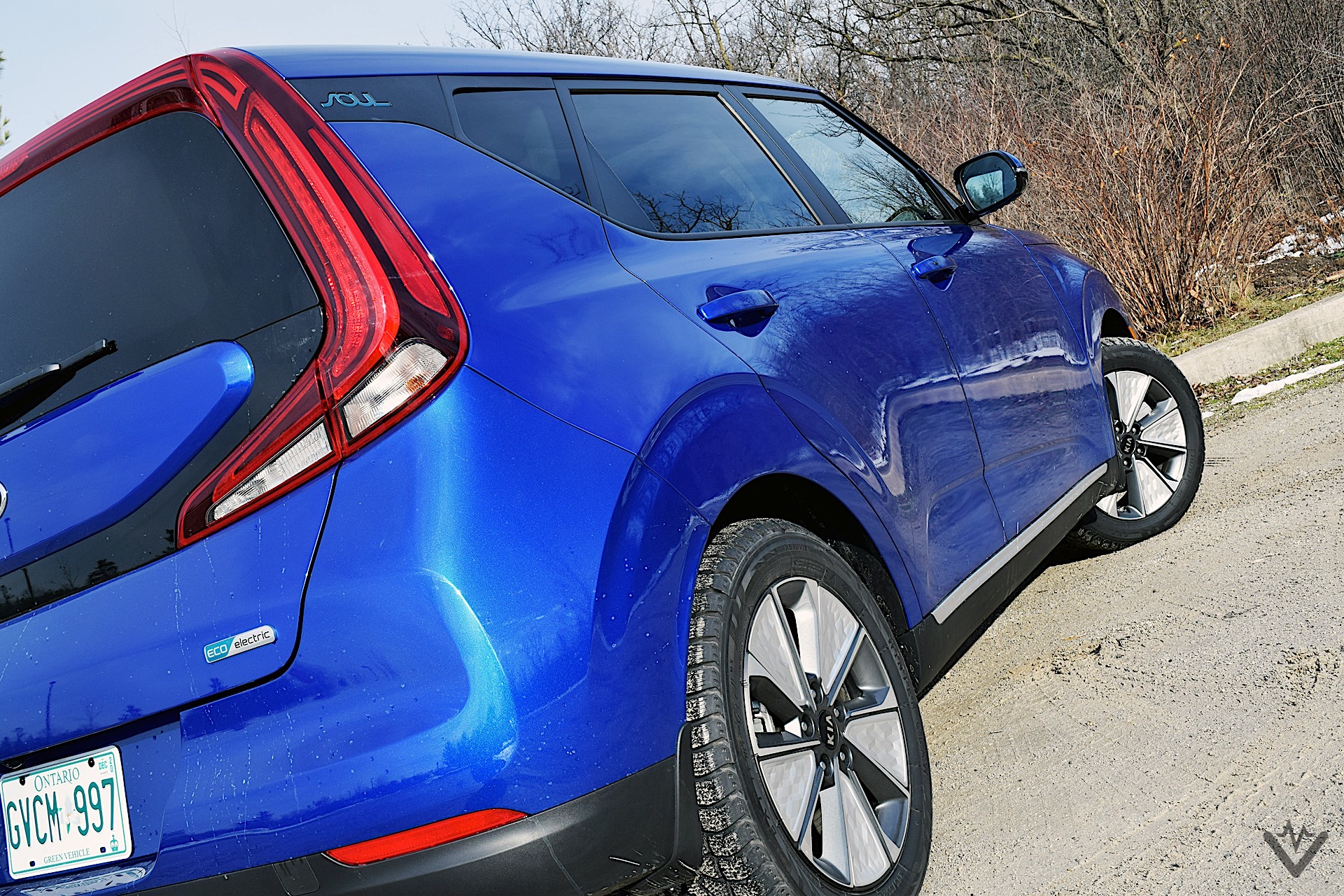
One of the most impressive parts of the Soul EV is not only how it drives, but how versatile the powertrain is. The motor powers the front wheels, featuring an output of 201 hp and 291 lb-ft of torque. It’s enough to chirp the tires from a stop, especially when using the Sport drive mode. There are two Eco drive modes as well, including a secret setting that requires you to hold the drive mode button. This Eco+ mode turns off all HVAC conditions and limits the top speed of the vehicle to 55 mph while tempering the throttle to ensure maximum efficiency.
Improving the first impression, the Soul EV managed to meet the range expectations. Traveling 10 miles meant that 10 miles ticked off the range counter, even if I had to make a pass or drive aggressively through the trip. Kia has an excellent algorithm for its range and one that will help alleviate any worries of range anxiety.
The small compact felt great, eager to get going at every opportunity you had on the open road. Those who have piloted the gas-powered Soul Turbo will even be blown away by this EV, which provides nearly 300 lb-ft of torque right from the get-go.
While the vehicle has a few drive modes to switch through, it also offers four different brake regeneration settings. There’s a Level 0 setting, which feels like you’re coasting with minimal deceleration, while Level 3 is nearly as aggressive as a one-pedal setup. This versatility is what helps the Soul EV appeal to EV nerds, but a next step would be a personalized setting that allows you to pick and choose aspects from the different driving modes to suit your driving style.
While there is a bit of body roll when it comes to tackling high-speed corners, the Soul feels relatively engaging to drive, save for the numb steering. There is a bit of wind and tire noise at times, though our model was wearing winter tires which doesn’t help things.
2021 Kia Soul EV practicality
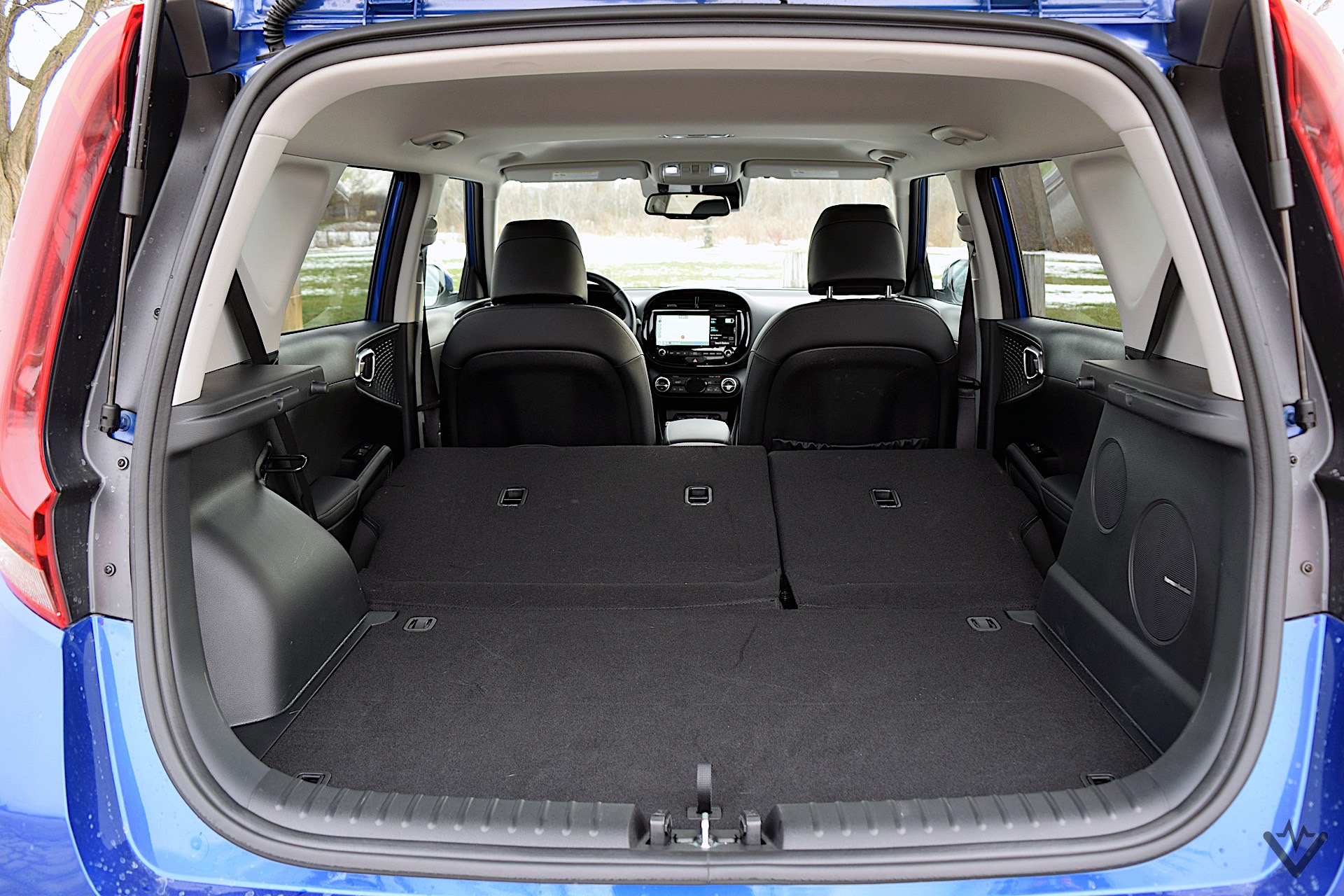
There is no front trunk in the Soul EV. Instead, you get 18.7 cubic feet of storage behind the rear seats. However, the cargo floor has a neat trick, as it has an extra five or so cubic feet to help store the portable charge cable. Fold those rear seats, and bam: 61.3 cubic feet of total storage. The gas-powered Soul has just less than one more cubic feet of total storage, for comparison.
This means the Soul EV is more practical than the Kia Niro EV, Hyundai Kona EV, and even the Chevrolet Bolt.
While the exterior proportions and styling are quirky, they lead to a very comfortable and accommodating interior. The headroom is generous in the front and rear of the vehicle. For a compact car, the rear passengers don’t feel like second class citizens.
2021 Kia Soul EV pricing and incentives
Pricing and packaging of the Soul EV haven’t been provided for the U.S. market yet. Based on the Canadian pricing, it is sandwiched between the more expensive Niro EV and the more affordable Hyundai Kona EV. However, that price is for the smaller battery pack model.
When you factor in the larger battery and better-equipped model, the Soul EV ends up more expensive than the base Niro and a little more affordable than the fully loaded Niro EV. It will be interesting to see how Kia U.S.A. sorts out the pricing of the Soul for our market, and whether it will continue this trend.
Final verdict
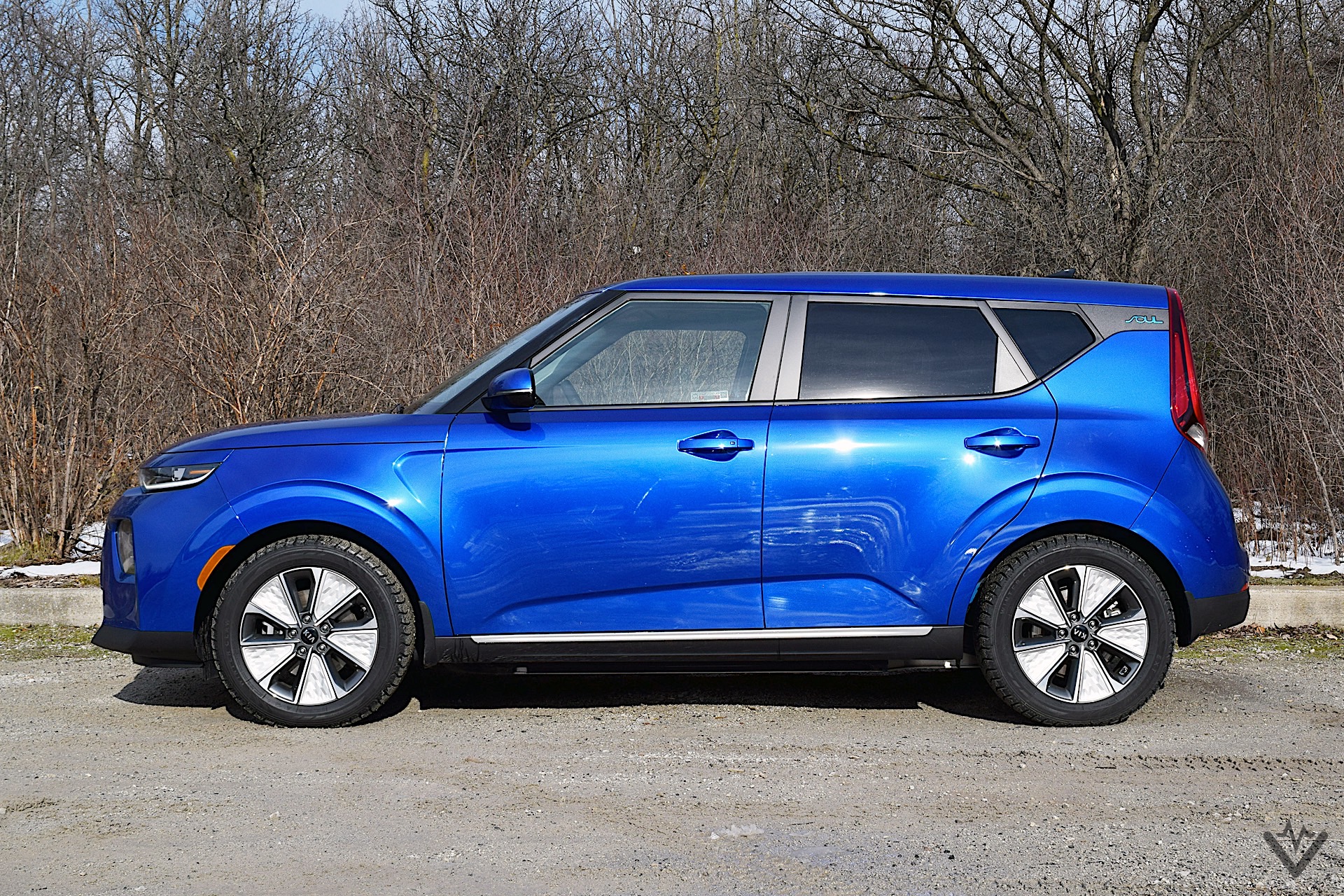
With quirky styling that leads to a more practical interior, it’s easy to see why the Soul a popular compact car. Adding the same electric powertrain as the Kona EV and Niro EV means the electrified Soul is sure to be a well-performing electric car. With more range than the Niro, but less than the Kona, it seems like the Soul will be a hit with customers looking to prioritize spaciousness and features over the electric range. That is if it ever arrives in the US.
At a glance
- Year: 2021
- Make: Kia
- Model: Soul EV
- Type: 4-door compact hatchback box
- Horsepower: 201 hp
- Torque: 291 lb-ft
- EV Range: 243-miles
- Pros: Quirky styling, realistic range, very practical, lots of tech features
- Cons: No idea when it will arrive in the U.S., wind noise, not as much range as Kona EV
- Base Price: N/A ($42,595 CAD)
- Price as Tested: N/A ($53,490 CAD)
Update (6:26 pm EST, December 8): Added Canadian pricing to the At a Glance section.
